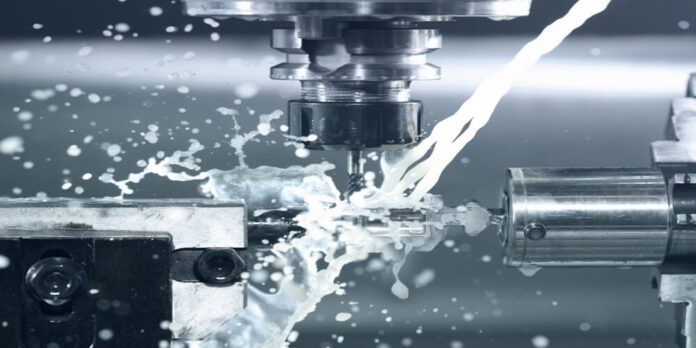Simply put, CNC milling is a machining process that is ideal for the production of parts in a prototype that is highly accurate and highly tolerant. For the effectiveness of this process, CNC parts must be in perfect condition.
Depending on the type of machine used, tolerance can range from +/- 0.001 in. to +/- 0.005 in. In some machines, tolerance is usually more than +/- 0.0005 in.
Common CNC Milling Operations
Because CNC machining is versatile, it is widely applicable in different fields and industries. Some of the common operations involved in CNC Milling include
1. Face Milling
In this type of milling process, the cutting tool axis is placed perpendicularly to the top of the workpiece. This process makes use of face milling cutters.
The face milling cutters have teeth on the periphery face and the tool face as well. Basically, the teeth on the periphery are used for cutting while the teeth on the face are used for finishing.
Summarily, the basic function of face milling is to craft flat surfaces and figures on the finished surface. Most operators prefer this to other types of milling operations. This is because it produces finishes that are of higher quality.
The two major forms of Face milling include side milling and end milling. Side milling uses side milling cutters while end milling uses end milling cutters.
2. Plain Milling
It is also called slab milling. In this type of milling operation, the axis of the cutting tool is placed parallel to the workpiece top.
This process uses plain milling cutters to carry out the cutting procedure. Cutters can be narrow or wide. While making cuts that run deep, narrow cutters are used. But if the cut you intend to make is not as deep, you make use of the wide cutters.
Hence it should be noted that the type of cutter employed is influenced by the details of the milling application. For instance, the size of the workpiece and the depth of the cut will tell the operator what size of the cutter to use.
Sometimes, Plain milling requires the removal of excess material from a piece of work. During such times, the operator introduces a coarse-toothed cutter first.
This process is set to run slowly and feed rates are very fast. The aim of introducing the fast feed is to create a custom-designed part.
After this process is completed, a more precise and finer toothed cutter is introduced. This process normally requires faster speed and slower feed rates to achieve its desired result.
3. Angular Milling
It is also called angle milling. In this type of milling operation, the axis of the cutting tool is set at an angle parallel to the top of the workpiece.
This process utilizes single-angle milling cutters depending on the desired design. Angular features produced could be serrations, chamfers, and grooves.
Angular milling is commonly used in the creation of dovetails. The degree of dovetail cutter to be used depends on the design of the dovetail.
Other forms of milling operations include Form milling, Gang milling, Straddle milling, Gear cutting, and Profile milling.
Conclusion
Sometimes, the CNC machine does not rely on only the above-mentioned operations. It utilizes other tools to further promote the accuracy and efficiency of the machining process.
Other tools could be boring, tapping, drilling, and reaming.














